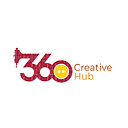4 Essential Steps of the Creative Process in Fashion Design
The creative process of building a piece of fashion varies widely from designer to designer, label to label, and market segment to market segment. But for most companies, from mass retailers to high-end makers of ready-to-wear, it starts with research. For some, that means building mood boards of imagery that captures the feeling a designer (or design team) is going after. For others, it means going on a vintage shopping expedition and lining up these pieces on dress forms, or else spending days and days at the library poring over history books. Inspiration trips are often a starting point for many ready-to-wear designers.
At the mass end of the market, designers and merchandisers spend time scanning trend forecasting databases for predictions on what colours, silhouettes and fabrications will be popular in the coming seasons. Mass retailers also often ask their teams to monitor what’s selling at luxury department stores and buy pieces they can use for pattern inspiration. While a designer choose to do their own fabric research, others have sizable teams who do this research for them. Indeed, so much of what happens during product design and development has to do with budget, the level of design and personal preference.
Which ever part of the aisle you fall on, there are guaranteed steps that must constitute your creative process, if you must succeed.
The Big Idea
What do you want to achieve? What vision do you see for this piece or collection you are about to make?
Before you begin to worry about curves and textures, it is important that every creative endeavour you embark upon is always tied to a vision. This vision will guide every other thing. Also, you need to consider the reality in which this vision is expected to fit into; An awareness of when you are designing for, will impact your choice of fabrics and colours. If you have compiled a target customer profile you can consider elements such as background, lifestyle, work and income to guide your creation, every step of the way. Does your brand focus on the use of sustainable materials? If so, how will this dictate the direction your Brief goes? Costing should also be a large consideration, as the materials you may want to use will have a huge impact on the price points of your finished designs.
Source and Compile your Research Material
Ideas for designing new collections can come from many different random sources. All good design starts with research, as it enables you to investigate and to learn something new or discover something from the past. It’s comparable to a journey which involves visiting, reading and viewing; above all, research is about the recording of information. Your research should cover Structure & Shape, Colour, Texture, Desired Details, Surface Decoration and Print. Historical References, Cultural Influences and Contemporary Trends should also be put into consideration as you gather ideas and decide the specifics of how you want to go.
Compiling your research into Mood, Story and Concept boards is a great way to instantly relay what it is you’re trying to say about your work, to other people. They could be your tutors, other designers, clients or financial backers, you will need their inputs at this level.
Design It
Now this is the fun part; designing from your research. The design phase is about creating fresh, original products by way of mixing up known elements in new and exciting ways. It is also about utilising the in-depth research you have gathered and exploiting it to reach a successful outcome.
At this phase, you will be tempted to go off-track, but it is very important that you exercise the discipline to stay in tune with the wisdom gathered from your preceding research. Let your creative juices flow, in the structured molds created from research.
Embrace Feedback and Improve
A work of art is usually never finished, hence a creative person must always be willing to change a few things. Expose your work to reviews and recommendations from mentors, colleagues and customers, and be willing to make any required change. This should be a resident part of your creative process, continuous improvement.
